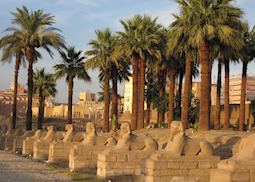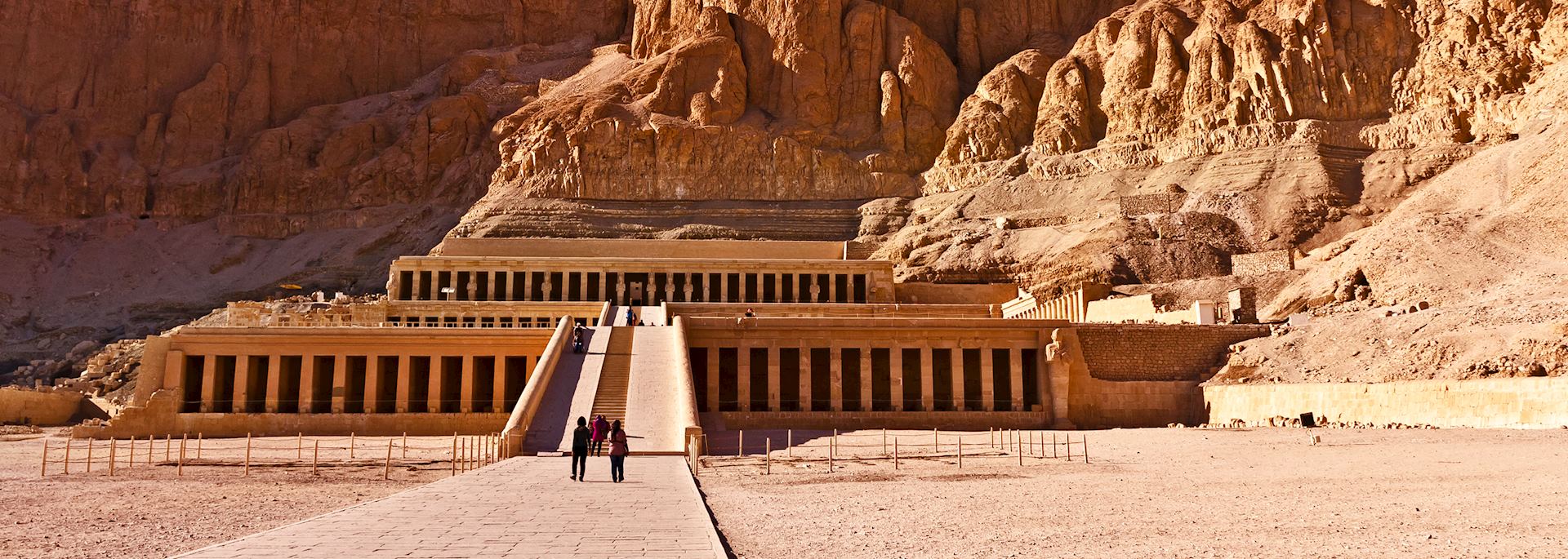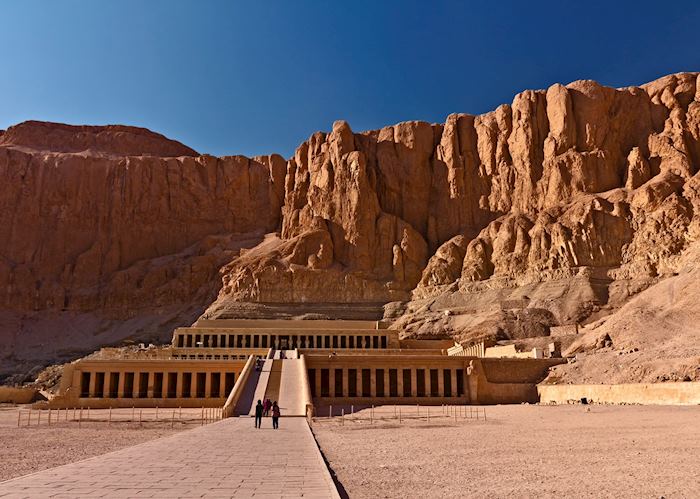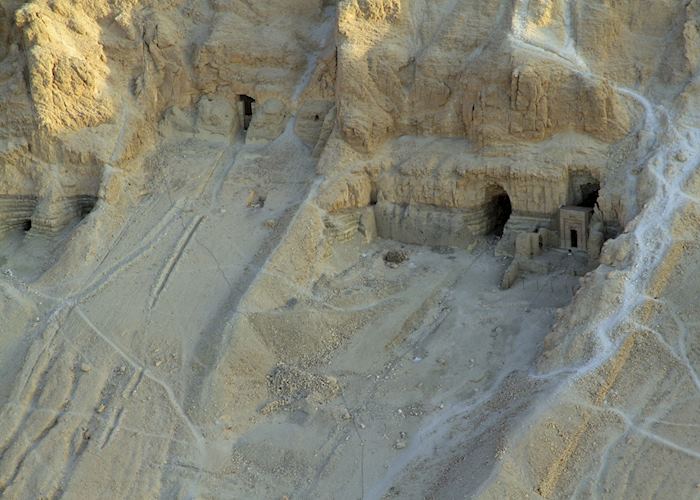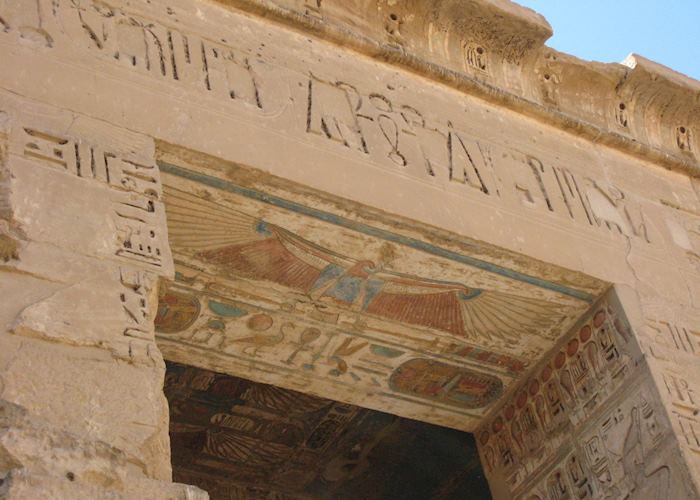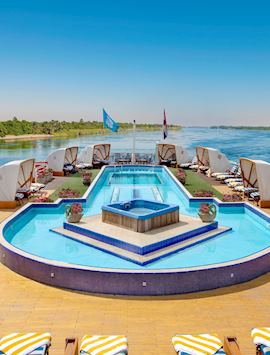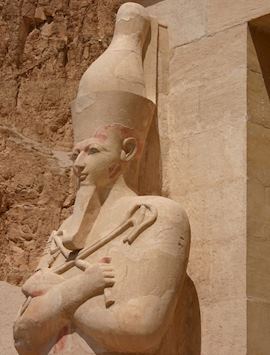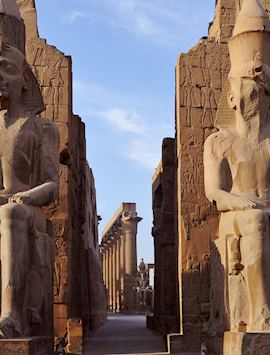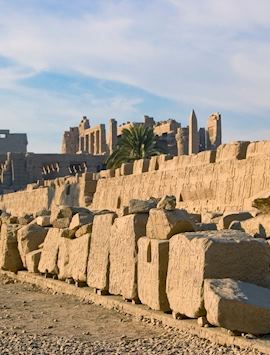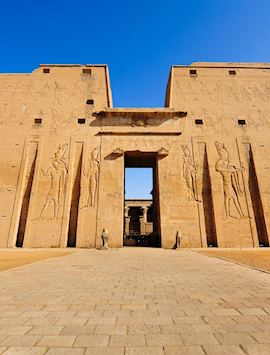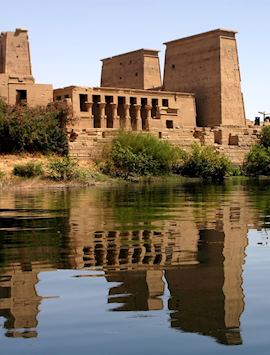The West Bank at Luxor is known as the Theban Necropolis. The Ancient Egyptian belief in the afterlife arose in part from the death and rebirth cycle of the sun, which they watched each day.
As the sun died over the West Bank and then was born again over the eastern horizon, they believed that if they were buried to the west, they too would be reborn, hence the tombs and funerary temples of the nobles and pharaohs of Thebes were all built on the West Bank.
This has left us a magnificent array of monuments in a relatively small area, and archaeologists have spent their entire lives exploring here. It was Howard Carter who exploded Egyptology into common conscience with his discovery of Tutankhamun's tomb: never before had a pharaoh been found with all his funerary goods intact. The grave goods were meant to help the pharaoh live a comfortable afterlife, and vast wealth was poured into them: Tutankhamun was a relatively minor king, and people have always been obsessed with finding the funerary goods of someone like Ramses II, although in all likelihood most tombs were plundered within years of being sealed up and the goods are long gone.
What remains are the tombs themselves, centered on two valleys, The Valley of the Kings and The Valley of the Queens. The principal target of this excursion is the Valley of the Kings, where the Theban pharaohs were buried. Tombs were built to differing plans but all involved at least one corridor and burial chamber. Tomb walls were decorated in hieroglyphics celebrating the pharaoh's life and containing prayers from the Book of the Dead, designed to ensure passage into the afterlife. Thanks to the dark, inert atmosphere of the tombs, this decoration has been stunningly preserved, with colors as vibrant as the day they were painted. It is an amazing sensation to be at the end of a tunnel, nearly 100 meters into the solid rock, and see a huge black granite sarcophagus before you with a superbly detailed painting of the sun god being towed over the ceiling in his divine barque.
Of the mortuary temples on the West Bank, that of Hatshepsut is perhaps the most impressive. A massive scheme of restoration has recently been completed: some people think this has left the temple looking sanitized and false, but the truth is, it actually now looks almost identical to the day it was completed, and is the most accurate insight we have into how mortuary temples must have looked. The colonnaded terraces are built in a natural amphitheater looking toward the Nile, and well-carved statues front most of the pillars. Reliefs depict conventional religious scenes as well as scenes of rural life and the story of an expedition to Punt launched by Hatshepsut and Tuthmosis III which came back laden with exotic goods including myrrh trees, some of which were planted in and around the temple precinct. Several myrrh trees' stumps survive today.
A full day excursion of the West Bank will typically include the Tombs of the Theban rulers in the West Bank and the Temple of Hatshepsut. Duration of the excursion is approximately five hours.
